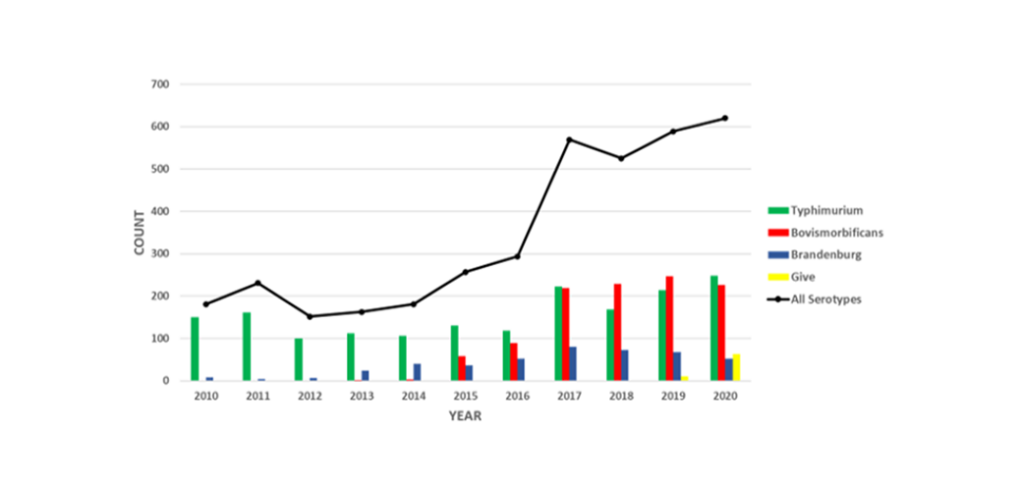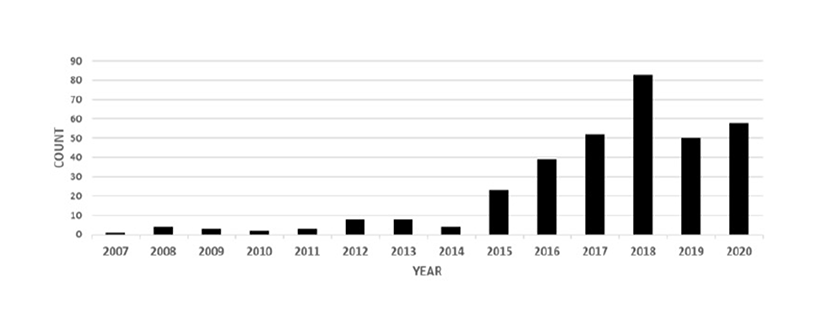In collaboration with dairy industry stakeholders, we conducted a study during the 2021-2022 dairy season to identify risk factors for salmonella outbreaks on dairy farms.
About the study
Massey University’s EpiCentre studies infectious diseases in livestock.
This study aimed to help farmers manage the risk of salmonellosis on their farms, thus protecting animal welfare and preventing the significant production impacts and costs associated with salmonella outbreaks and risk’s to public health.
A better understanding of salmonella in dairy cattle will lead to improved prevention and control of outbreaks and better outcomes for public health in New Zealand by protecting farm workers, their families and the general public from salmonellosis.
Project team
The project lead for this study is Dr Chris Compton.
Dr Chris Compton
PhD, MVS, BVSc., AFHEA
Senior Lecturer in Veterinary Epidemiology
Simon Verschaffelt
Technician
Salmonella in New Zealand
Salmonella causes outbreaks of scouring, abortion and death in dairy cattle. The effects of salmonella on-farm can be devastating, posing serious risk to health, productivity and welfare of affected animals. Salmonella are also a leading cause of food poisoning in humans in New Zealand.
The prevalence of Salmonella outbreaks on New Zealand dairy farms has increased in the years from 2015 to 2020 , and new serotypes emerged and spread around the country. The same trend is observed in food-borne salmonellosis in humans.
Ongoing national surveillance of veterinary diagnostics laboratory in the years 2015 – 2020 shows the emergence and rapid spread of Salmonella serotypes Bovismorbificans, Give and Brandenburg in the cattle population of New Zealand (Figure 1).

Figure 1: Laboratory confirmed cases of salmonella in cattle since 2010 (source: MPI)
Foodborne disease surveillance conducted by ESR shows a mirroring trend in the number of diagnosed human cases of Salmonella Bovismorbificans (Figure 2).

Figure 2: Notified human cases of Salmonella Bovismorbificans since 2007 (source: MPI/ESR)
Key results and recommendations for farmers from the national salmonellosis study
Chris Compton, EpiCentre, School of Veterinary Science, Massey University
Background
NZ vet diagnostic labs reported a two- to three-fold increase in confirmed cases of salmonellosis on dairy farms and the emergence of Salmonella serovars previously undetected in NZ in the 10 years since 2011. This pattern concerned the Ministry for Primary Industries (MPI) because of the impact of these cases on the health and welfare of dairy cattle, and the potential risk these zoonotic diseases posed to public health. MPI asked Massey University to undertake a nationwide study starting in 2021 to describe the extent of these outbreaks and to investigate possibly risk factors for them.
How the study was run
One hundred and seventy-three dairy farms were enrolled from 10 NZ regions in the study over the two dairy seasons 2021-22 and 2022-23. Farms were eligible for enrolment if they had spring-calving herds of more than 120 cows and supplied milk to a commercial processor. ‘Case’ farms with naturally occurring salmonellosis outbreaks were identified by vets and were enrolled in the study if they had more than 10 animals affected on the farm and the disease was confirmed by laboratory tests. ‘Control’ farms were randomly selected from Fonterra suppliers and matched with case farms on the date they planned to start calving and their farming region and were enrolled if salmonellosis had not been diagnosed or suspected on the farm in the current season.
Key study results
- Salmonellosis outbreaks most commonly involved mixed age (MA) milking cows and milk-fed calves
- Abortion outbreaks in dry cows and rising 2-year-old heifers (R2’s) were least common
- Calves were most severely impacted in salmonellosis outbreaks- rarely as great as 100% rates of sickness and mortality but more commonly 25-60% of calves were affected and < 20% died
- Commonly 5-10% of R2’s and MA cows were affected in an outbreak and <5% died
- Approximately one quarter of case farms experienced salmonellosis outbreaks in multiple management groups in the same dairy season
- 2% of control farms had experienced a salmonellosis outbreak in the previous season
- With statistical analyses we identified the following risk factors for salmonellosis outbreaks in
- Any animal management group:
- Increased herd size: 20% increase in risk per 100 cows
- Presence of wild deer on their properties: five-fold increase in risk if present
- Effluent application rate > 15mm: six-fold increase in risk if practiced
- Milking cows:
- Feeding of pre-mixed mineral blends
- Calves
- Increased herd size: 50% increase in risk per 100 cows
- Increased number of calf rearing staff: two-fold increased risk per person
- Any animal management group:
- We tentatively identified that feeding magnesium chloride to milkers increased the risk of an outbreak in that group four and a half-fold
Recommendations
Key recommendations include maintaining effective biosecurity and pest management strategies, minimising effluent application rates and taking particular care to offer dairy cows mineral supplementation accurately, especially when using pre-mixed mineral supplements.
For more detailed recommendations on biosecurity control measures please click on this link to the page on this website
To explore effective biosecurity measures for controlling salmonellosis on New Zealand dairy farms.
Contact us : : Salmonella study
Email @ salmonella@massey.ac.nz
Postal address @
EpiCentre PN623
Massey University
Private Bag 11-222
Palmerston North 4442
New Zealand